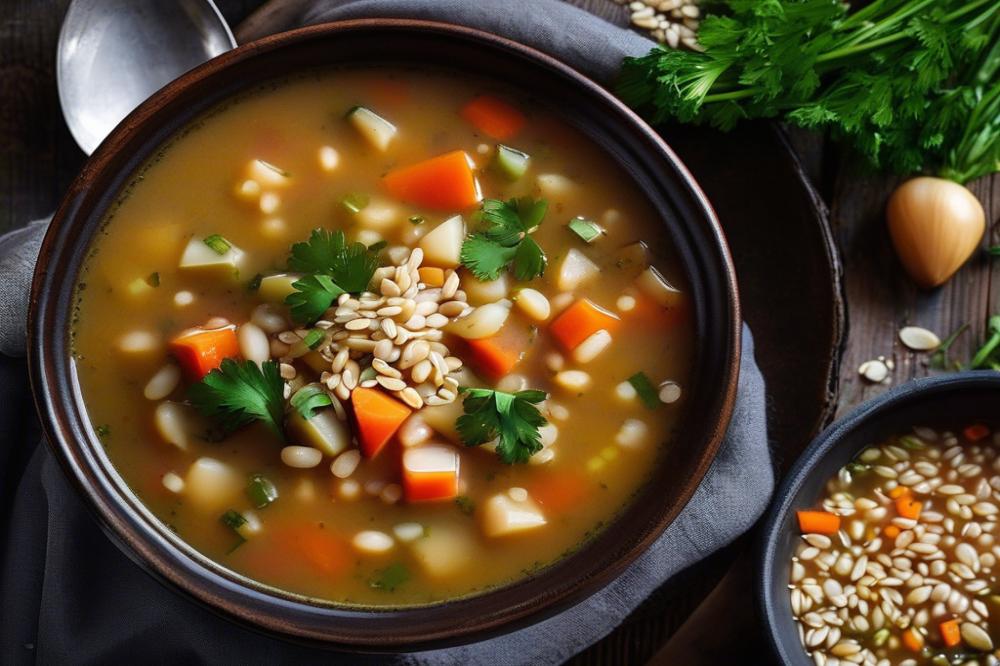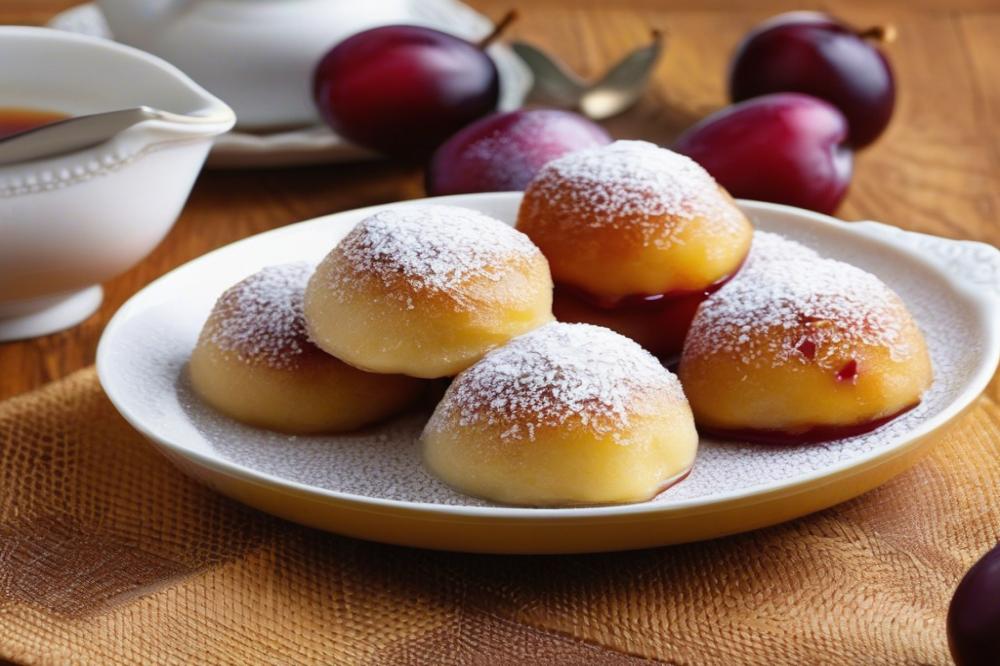Introduction
Pastéis de nata are a beloved traditional Portuguese dessert that has delighted many for generations. These small, sweet egg tarts are known for their flaky pastry and creamy custard filling. Their history dates back to the 18th century, originating from the Jerónimos Monastery in Lisbon. Bakers in this monastery created a delicious pastry that quickly gained popularity among locals and travelers alike.
Beyond the classic version, many culinary enthusiasts have experimented with pastéis de nata, leading to delightful variations. One exciting twist is the addition of cheese filling. This change introduces a new layer of creaminess and richness to the already enticing dessert. The combination of sweet custard and savory cheese creates an intriguing flavor profile that is hard to resist.
The appeal of these cheese-stuffed pastéis de nata is undeniable. Their creamy texture and unique taste set them apart from other pastries. Many find them to be the perfect finishing touch to a meal or a lovely treat during tea time. This easy recipe allows anyone to bring a taste of Portugal’s culinary heritage to their own kitchen through the magic of baking.
The Allure of cheese-stuffed pastéis de nata

Pastéis de nata are a beloved Portuguese treat, known for their perfect combination of flaky pastry and sweet custard. These delightful egg tarts have captured the hearts and taste buds of many. Traditional recipes often focus on a creamy custard filling that sits on top of a golden, crispy crust. Each bite offers a satisfying contrast between the smooth interior and the crispy exterior.
The addition of a cheese filling brings a new layer of flavor to this classic dessert. This delightful twist enhances the egg tart experience by introducing a savory note that balances the sweetness of the custard. Imagine the rich, creamy cheese mingling with the smooth custard, creating a unique taste sensation. This variation transforms the pastéis de nata into something even more special.
In Portugal, pastéis de nata hold great cultural significance. They are often enjoyed during family gatherings, festivals, and celebrations. Many bakeries take pride in their traditional recipe, ensuring that each tart is crafted with care. Variability in recipes exists, with some bakers adding hints of cinnamon or lemon zest to create their special touch.
This creamy dessert not only satisfies a sweet tooth but also tells a story of Portuguese heritage. With each bite, one can experience the warmth of home and the joy of sharing desserts with loved ones. Recipes have evolved over time, but the essence of pastéis de nata remains strong.
When making the cheese-stuffed version, the baking process is crucial. Properly baking the pastries creates a light and airy flaky pastry, fundamental to the experience. It’s an easy recipe for anyone wanting to explore Portuguese cuisine. The layers of the pastry must be thin enough to achieve that perfect crispy crunch while supporting the rich fillings.
Ultimately, cheese-stuffed pastéis de nata present a delightful blend of textures and flavors. The harmony of ingredients invites everyone to indulge, making it evident why this dessert remains a favorite. Whether enjoyed at a café or homemade in one’s kitchen, they continue to bring joy to many people.
Ingredients List

Here is a detailed list of ingredients needed for your cheese-stuffed pastéis de nata. Each item plays a crucial role in creating the perfect balance of flavors and textures.
- Puff pastry: 250g
- Cream cheese: 150g
- Sugar: 100g
- Egg yolks: 4
- Milk: 200ml
- Heavy cream: 100ml
- Vanilla extract: 1 tsp
- Cornstarch: 2 tsp
- Lemon zest: from 1 lemon
- Ground cinnamon: 1/2 tsp
- Salt: pinch
Now, let’s break down the nutritional information for these ingredients. A 250g serving of puff pastry provides about 890 calories, mainly from carbohydrates and fats. Cream cheese is rich and creamy; 150g contains roughly 500 calories, with significant protein and fat content.
Next on the list, sugar adds sweetness. The 100g included in your recipe will contribute approximately 387 calories, offering pure carbohydrates. Each egg yolk, four in total, has around 55 calories, along with fats and protein that enrich the custard.
For the milk, 200ml yields about 100 calories. This dairy component adds creaminess. The heavy cream is even richer; 100ml contributes around 350 calories. This will give your dessert a luscious texture.
The scent of vanilla elevates the dish. One teaspoon carries about 12 calories. Cornstarch, while serving as a thickening agent, adds minimal calories—about 20 for 2 teaspoons. Zest from a lemon brightens flavors. It also contains negligible calories but significantly enhances taste.
A hint of cinnamon, at half a teaspoon, adds warmth without many calories at all. Finally, a pinch of salt enhances all these flavors. An essential element, it adds depth without impacting the overall calorie count.
Understanding these ingredients is key for your baking journey. They come together to create a delightful creamy dessert with a unique cheesy twist. As you prepare these flavorful layers in your flaky pastry, keep their nutritional values in mind for a balanced treat.
Cooking Instructions

Preparing the Pastry
First, take your puff pastry out of the refrigerator. Slightly warm it to prevent cracking. Roll the pastry on a floured surface until it is thin. With a sharp knife or a pastry cutter, cut circles that are about 10 cm in diameter. Place each round into a muffin tin or a similar mold. Press gently into the bottom and sides. This forms the base for your delicious tarts.
Making the Custard
In a medium saucepan, combine milk and cream. Add sugar, then stir well to dissolve. Next, sprinkle in cornstarch while mixing vigorously to avoid lumps. Introduce vanilla extract and lemon zest for added flavor. Heat the mixture over medium heat. Continue stirring until it thickens and becomes creamy. Remove from heat and let it cool slightly before using.
Preparing the Cheese Filling
Grab a medium bowl and mix cream cheese until it is smooth. Gradually mix in sugar, ensuring it blends well. Add egg yolks one at a time, mixing thoroughly after each addition. This creates a rich filling that complements the custard. Taste it to see if it is sweet enough for your preferences. Adjust sugar as needed.
Assembling the Tarts
Begin with layering the custard in the pastry shells. Fill each one halfway to leave room for the cheese filling. Spoon the cheese mixture on top of the custard gently. It is important to layer carefully to achieve a lovely swirl. Avoid overfilling, as the mixture may spill while baking.
Baking
Preheat the oven to 220°C (430°F). Place your tarts in the oven once it reaches the desired temperature. Bake them for about 20 to 25 minutes. Keep an eye on them as they bake. Look for a golden-brown top and bubbling custard. Allow the pastries to cool for a few minutes before removing them from the tin. The flaky pastry should be crisp, and the creamy dessert must set perfectly. Enjoy these delightful treats warm or at room temperature.
Tips for Perfecting Your Pastéis

Creating the perfect pastry starts with choosing the right dough. Use high-quality butter for the best flavor. Make sure the butter is cold before mixing. This helps create a flaky pastry that melts in your mouth. Rolling out the dough must be done carefully. Too much pressure can make the pastry tough, instead of light and airy.
When it comes to the custard, the balance of ingredients is key. Combine egg yolks, sugar, and milk with a touch of vanilla for flavor. Cook the mixture gently over low heat to avoid scrambling the eggs. Stir continuously, so it thickens evenly, resulting in a smooth, creamy dessert.
A common mistake is filling the pastry cases too full. Leave some space to allow for rising during baking. Overfilling can lead to messy results and a loss of that flaky texture. Baking temperature plays a huge role too. High heat is important to create a crisp top and caramelize the sugars in the custard.
Troubleshooting Tips
If your pastéis de nata come out too soggy, check the baking time. They may need a few extra minutes in the oven. On the other hand, if they are too dry, reduce the baking time slightly. Keep an eye on the color; they should turn a nice golden brown.
After baking, allow them to cool slightly before trying to remove them from the tins. Using a non-stick baking spray can make the release easier. Don’t skip this step. Sticking can ruin the beautiful shape of these unique treats.
Storage and Reheating
To preserve their freshness, store your cheese-stuffed pastéis de nata in an airtight container. Refrigerate if you do not plan to eat them within a couple of days. When reheating, do it gently in the oven instead of the microwave. This ensures the pastry remains flaky while warming the custard inside.
Finally, enjoy these sweet delights within a few days for the best flavor and texture. Make sure to take your time in each step. It can make all the difference in achieving that traditional recipe feel. The effort is worth the creamy filling and flaky goodness in every bite.
Serving Suggestions
When it comes to serving cheese-stuffed pastéis de nata, presentation matters. These delightful treats deserve a spot on a beautiful platter. A simple wooden board can add a rustic touch, while delicate china elevates the experience. For a splash of color, consider garnishing the pastries with fresh berries or mint leaves. The contrast enhances their appeal, making them eye-catching and inviting.
Pairing advice for beverages is essential to enjoy these cheese-filled pastries fully. Coffee is a classic choice. Its bold flavor complements the sweetness of the custard nicely. A rich espresso, especially, contrasts beautifully with the creamy dessert. For a twist, try pairing them with a glass of port wine. The sweet notes of port create a delightful match with the flaky pastry and rich cheese filling.
Special occasions call for a bit of creativity. When hosting a gathering, consider serving your pastéis in individual little boxes. Wrap them in parchment paper tied with twine for a charming look. You might also sprinkle a light dusting of powdered sugar on top right before serving. This final touch creates an inviting and festive atmosphere. Consider placing small tags on each box, sharing a brief history of the traditional recipe. Guests will enjoy learning about this unique treat.
For a more interactive experience, invite your friends to create their own toppings. Set out a variety of options like chocolate drizzle, candied nuts, or a sprinkle of cinnamon. Each guest can personalize their egg tart, making it a fun part of the gathering. These small details can make a simple dessert feel extraordinary.
Final Thoughts on Cheese-Stuffed Pastéis de Nata
Savoring cheese-stuffed pastéis de nata is like indulging in a little piece of Portugal. The blend of creamy custard and savory cheese creates a delightful contrast that excites the senses. Each bite offers a burst of flavor, making it hard to believe such a dish can be so simple to prepare at home. Enjoying these pastries can transport anyone to a cozy café in Lisbon, even if you’re just in your kitchen.
Trying this easy recipe opens the door to new culinary adventures. Making pastry may seem daunting at first, but this dish offers a welcoming entry into baking. The steps are straightforward, and soon you’ll be pulling golden, flaky delights from your oven.
Personal touches can truly elevate your creations. Consider adding different cheeses or spices to the filling. Maybe try a hint of lemon or nutmeg for a fresh twist. Each variation can turn the same basic recipe into something new and exciting.
So, gather your ingredients and embark on this delicious journey. Enjoy the process, experiment with flavors, and share your delightful creations with friends and family. Discover the satisfaction of homemade treats and celebrate the joy of Portuguese tradition. Happy baking!



